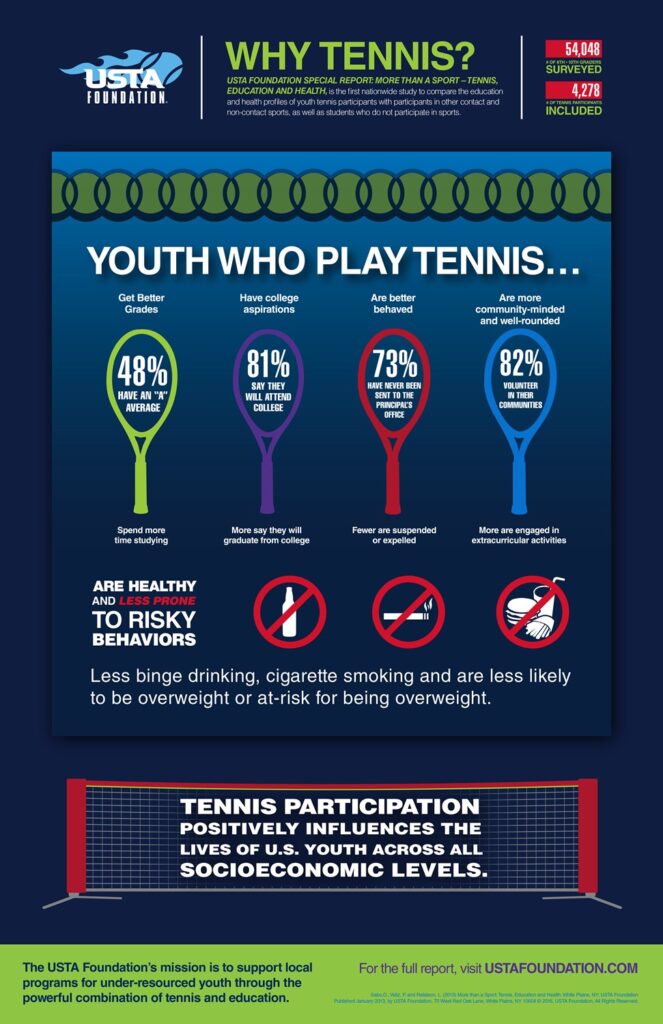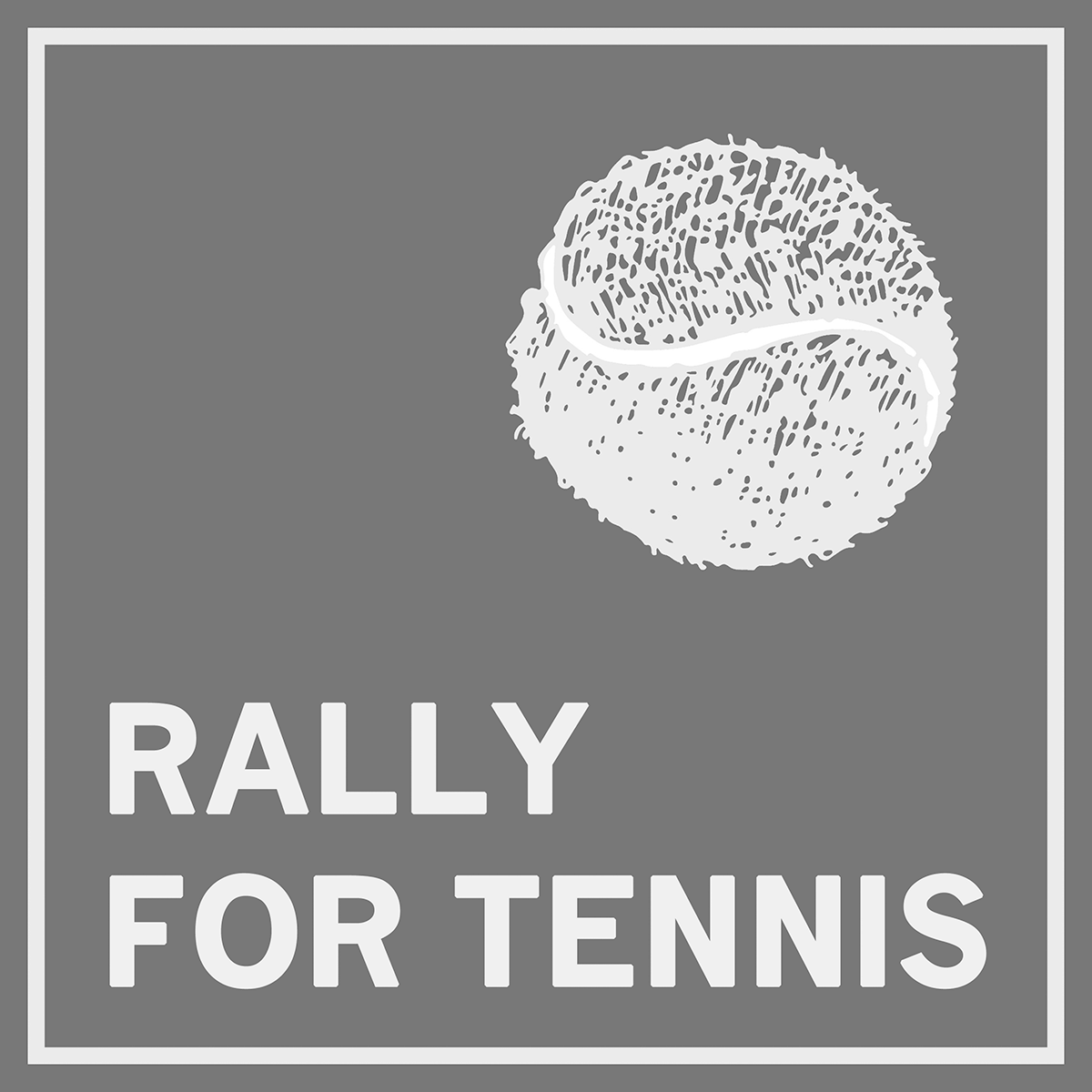Research has repeatedly shown that there is a powerful connection between sports participation and academic success. However, tennis—in particular—has been directly linked to higher school performance, improved social behavior, lower rates of school suspensions, and improved adolescent health. A pivotal study from 2013 called “USTA Serves Special Report, More Than a Sport: Tennis, Education and Health” compared the education and health profiles of tennis players with other high school athletes and students who chose not to participate in sports. The results of the study were remarkable.

https://www.ustafoundation.com/resources/research/
In terms of academic success, the data suggests a strong correlation between playing tennis and school performance. What’s more, these results were consistent across all socioeconomic levels. The survey data showed a significantly higher percentage of tennis players making A’s and B’s, rather than C’s and D’s, than other categories of students
While the study does not attempt to explain the correlation between tennis and high academic performance, several theories have been offered:
- Tennis players train in problem solving all the time—indeed, they are solving problems before, during and after every single point. It is you against one opponent. Cunning, anticipation, ability to identify weaknesses in the opponent’s game, concentration, and mental recovery – those are all tactics and skills necessary to win matches, even against opponents that might be bigger, more technically skilled, or more powerful.
- Tennis teaches a skill-set that equips people to become successful. Tennis players must learn to be good winners, as well as good losers. In this regard, tennis teaches us that making mistakes is part of life. On the court, we all make mistakes—even the best players miss shots and botch serves! Realizing it is okay to make mistakes, and learning from those mistakes, is a huge part of the learning process. This resilience fosters academic success, grows our students’ educational aspirations, and helps to avoid problematic behaviors that can lead to suspensions and expulsions.
- Playing hard, making honest calls, and shaking hands at the end of a match—no matter how intense—teaches students the right way to behave in life. On the tennis court, we exhibit good sportsmanship and show each other respect. These behaviors are critical for success, regardless of where life may take us.
The study data also show that tennis players are generally well-rounded. They reported higher rates of involvement with extracurricular activities, both in their school and their communities, in comparison with students who played other sports or no sports at all. The coed nature of the sport also appears to open more social-psychological “doors” to adolescents than traditional contact sports, which may help them to be more receptive to music, arts, volunteering, and community events participation.
Finally, the study data shows that tennis positively contributes to adolescents’ overall health and well-being. Tennis players reported a lower risk for being overweight and lower rates of harmful behaviors like binge drinking, marijuana use and cigarette smoking.
The Tennis Industry Association has also reported that tennis helps with, among other things, increased speed, leg strength, agility, bone strength and density, flexibility and eye-hand coordination.
For all of these reasons, we are committed to bringing tennis to the young people of Newark. While the study data suggested that the educational and social advantages associated with tennis were more prevalent among wealthy populations, those folks have historically had better access to quality tennis programs. GNTE is committed to ensuring that this is no longer the case.
Since GNTE’s inception three years ago, we have proudly served over 135 children and their families in the Newark area. Each year, our attendance grows and we have an impressive percentage of children returning to the program each season.





